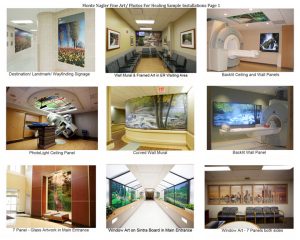 What is Arts in Health?
What is Arts in Health?
Originally published by www.artshealthandwellbeing.org.uk/what-is-arts-in-health
Over recent years, there has been a growing understanding of the impact that taking part in the arts can have on health and wellbeing. By supplementing medicine and care, the arts can improve the health of people who experience mental or physical health problems. Engaging in the arts can promote prevention of disease and build wellbeing. The arts can improve healthcare environments and benefit staff retention and professional development.
There are many different ways in which this work is described (arts in health, arts for health, arts and health, etc.) but essentially, they are all about the effect that active engagement can have on the health and wellbeing of individuals and communities. As work in this area has grown, so understanding and measuring of its impact has grown and there are now a number of academics around the country (and world) investigating the impact that the arts have on health.
Who does this work?
There are a lot of different people who work in arts and health. These include arts therapists, researchers and curators who manage arts programs in hospitals. There are also many individuals and organizations who work in the community providing arts opportunities to people experiencing ill health. Other artists and arts practitioners work in medical schools, with architects and in the field of health promotion. More information about the different areas of work in arts in health is listed below.
What sort of thing does arts in health involve?
There are, broadly, five main areas of arts in health work:
Arts in the healthcare environment: For the past thirty years, many hospitals have chosen to incorporate artwork into the healthcare environment to improve the experience of patients and staff. Nowadays, most hospitals have art exhibitions, and many have artists working to improve lighting, wayfinding, gardens and clinical areas.
Participatory arts programs: Getting involved in the arts provides both social and creative outlets for people who are ill – either with physical health issues or mental health issues. Many care homes, GP surgeries and hospitals as well as community settings provide opportunities for people to engage with the arts as a tool to improving their wellbeing.
Medical training and Medical Humanities: For hundreds of years, the arts have played a part in developing the practice of medicine and the understanding of wellbeing. Lots of doctors will now have an arts aspect to their training and many health-workers find that active participation in arts activity helps them with their work. The arts are also often used to help explore ethical issues in medicine.
Arts Therapy: Arts therapists are registered with the Health Professions Council and are accredited forms of therapy which use the arts as their primary form of communication. The arts therapies (drama, music and visual art) have now become an established psychotherapeutic tool for use by qualified therapists with clients, usually on a one to one basis.
Arts on Prescription: Arts on Prescription schemes provide arts and creative activities for participants, usually for people experiencing mental health problems and social isolation. The purpose of such schemes is not to replace conventional therapies but rather to act as an adjunct, helping people in their recovery through creativity and increasing social engagement. Although the schemes are varied in their approaches and settings, the common theme is that there is a referral process.
Does it work? Is there any evidence?
There is now a growing body of evidence demonstrating that participation in the arts and access to a range of arts opportunities can dramatically improve health outcomes and increase wellbeing. In 2007, the Department of Health’s Review of Arts and Health Working Group, examined the role the arts can play in health. Its key findings were:
• arts and health are, and should be firmly recognized as being, integral to health, healthcare provision and healthcare environments, including supporting staff
• arts and health initiatives are delivering real and measurable benefits across a wide range of priority areas for health, and can enable the Department and NHS to contribute to key wider Government initiatives
• there is a wealth of good practice and a substantial evidence base
• the Department of Health has an important leadership role to play in creating an environment in which arts and health can prosper by promoting, developing and supporting arts and health
In 2011, the British Medical Association published a paper on ‘The psychological and social needs of patients’ which found that:
Creating a therapeutic healthcare environment extends beyond the elimination of boredom. Arts and humanities programs have been shown to have a positive effect on inpatients. The measured improvements include:
• inducing positive physiological and psychological changes in clinical outcomes
• reducing drug consumption
• shortening length of hospital stay
• promoting better doctor-patient relationships
• improving mental healthcare
Changes in the national health service
As the health service changes, so too does the way in which the arts are used to engage with health. Some of the new Clinical Commissioning Groups are likely to offer arts activity to their patients and as local authorities assume responsibility for public health, so the arts are likely to be used by them to help promote healthy communities.
for a pdf. version click here: Photos for Healing Newsletter #131- Jul. ’19


